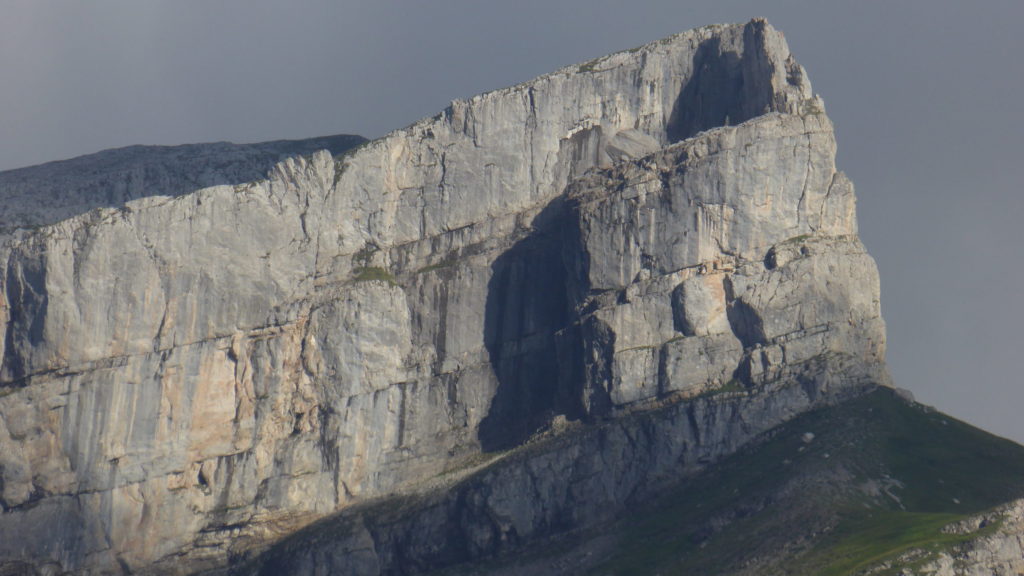On the 6th day of FIFAD two films stood out. One looked at a wheelchair bound woman who still had the urge to go climbing and the second film looked at a woman who went from riding snowboarding lines in winter to base jumping in summer. By having these two documentaries the FIFAD event promoted women who appreciate and enjoy extreme sports.
A few weeks ago I wrote about superhuman climbers, it explored how differently abled people were empowered through the efforts by climbing centres to allow wheelchair bound people, people with mental issues and others to climb despite the challenge. Rêver sous les étoiles was a documentary exploring this topic from another angle. Vanessa François moved to the mountains with the goal of becoming an Alpinist but was paralysed from the waist down after a block of ice damaged her spinal column. Thanks to the people she surrounded herself with she was able to continue climbing, cycling and doing other sports despite this disability.
In the film we see how friends set up a route on El Capitan for her to climb and how the CRS in France prepared the equipment for her to spend a night at over 4000 metres near the Aiguille du Midi. We see how a woman, surrounded by the right people could, despite her injuries, keep living adventures.
There is a moment in this film where we see that she is given the opportunity to act in a play where actors in wheel chairs and conventional actors could interact to provide people with a show. As I watched this documentary I thought about how technology could be adapted to be invisible in the performance. At the moment wheelchair bound actors need to rely on conventional systems to move the chair around. Imagine if engineers from EPFL and other tech universities designed a wheelchair control system that would allow wheelchair bound actors and performers to control the wheel chair with arm and head movements. Imagine if the movement of the chair did not rely on a joystick but rather a harness or sweater which controlled the chair’s movement. In future I expect that technology will become invisible, to provide these people with wheel chairs.
The documentary is great because it shows that injuries are an opportunity to adapt new techniques to conventional sports rather than to give up and live a life that is more limited. This empowering documentary should encourage people not to give up on their passions and to continue striving for more.
La face cachée de Géraldine Fasnacht
This documentary is about Géraldine Fasnacht, a snowboarder from Verbier who won snowboarding competitions in winter and then moved on to base jumping after friends invited her to jump. In this documentary she introduces a doctor to skydiving and explains the parallels between snowboarding and base jumping. She talks about some of the principals of base jumping and how technology has allowed the sport to improve and become more interesting. As with many extreme sports documentaries and films she speaks about the importance of safety norms to make sure that dangers are avoided.
In diving, mountaineering, base jumping and other sports there is a common philosophy to minimise risk. She speaks about the importance of knowing when to call a jump, to cancel it if there is doubt. This is an important aspect of many conversations in extreme sports films. Goals and ambitions are important but it is just as important to know when to say “Let’s try again next time”.
Sommets de vie
Sommets de Vie by Sebastien Montaz Rosset illustrates this effectively. The film maker, along with Jordi Tosas, who had been on 37 trips to the Himalayas arrived just two days before the earthquake. When the earthquake struck they abandoned their original projects to help with search and rescue efforts. They went in to more remote valleys to scout what areas were affected by landslides, where bodies could be found and to find whether people who had survived needed help. In this film they walk along footpaths. Occasionally they had to cross multiple places where landslides had occurred. When they found corpses or possessions they took pictures along with GPS coordinates in order to provide search and rescue teams with information to help with the repatriation of remains to help provide families with closure. This documentary is nice because it shows Westerners working along with Asians, UN organisations such as the World Food Program and others to help people cope with and adapt to the new situation.
At some moments we see that landslides are taking place as food and aid are provided. We see how although the Himalayas are beautiful they are also a dangerous place. I like that the film concludes by saying that Jordi still wants to set up a ski school, so that people in the relevant countries can enjoy the mountains differently. It is nice to see that people who travel to these areas give back and integrate with locals.



